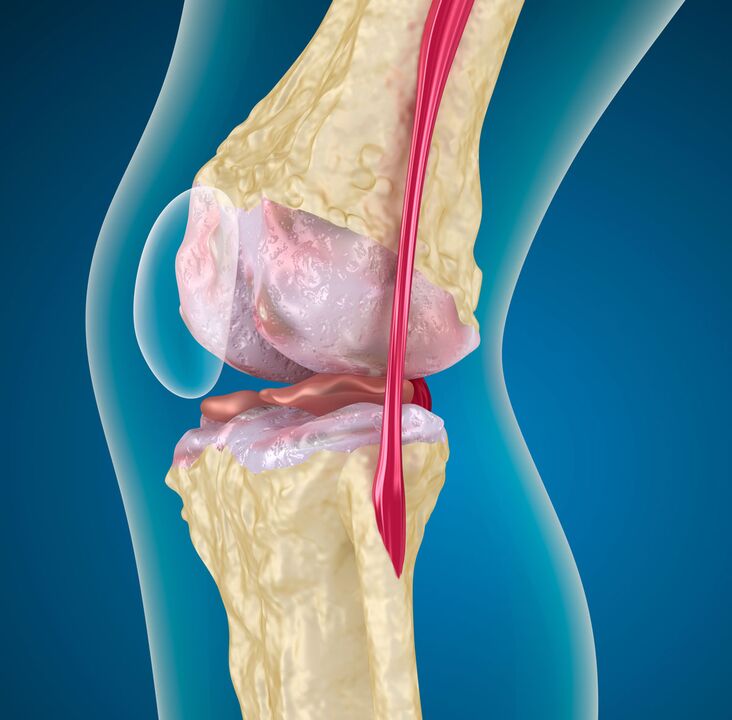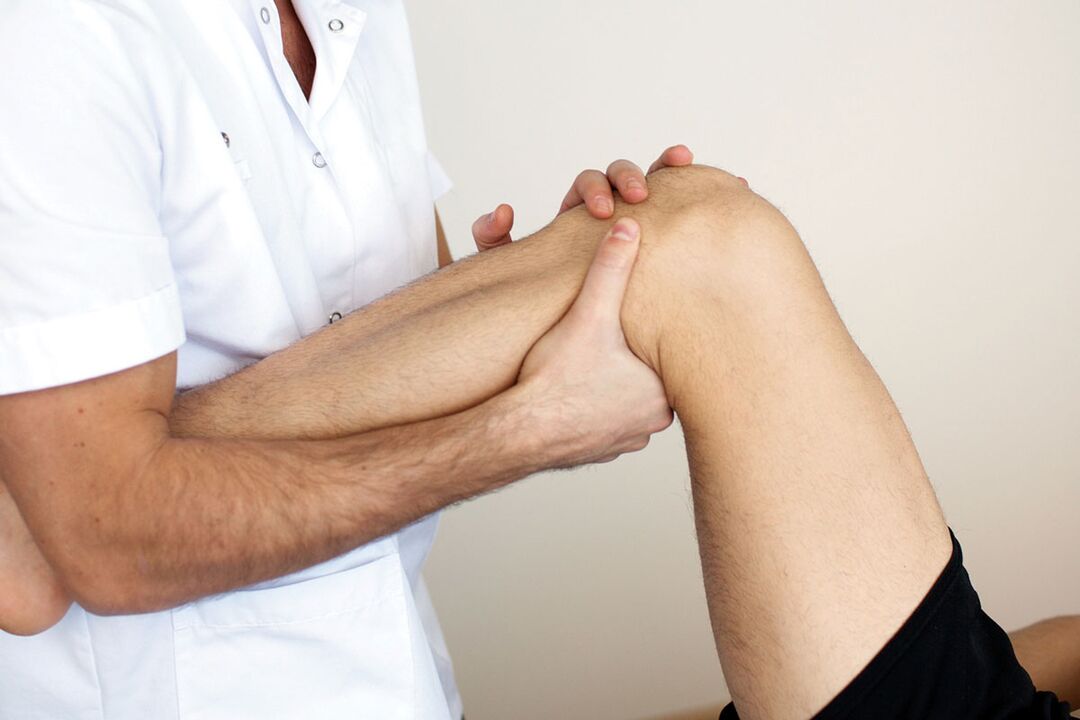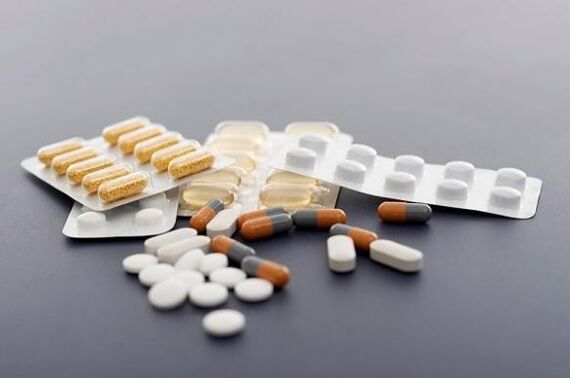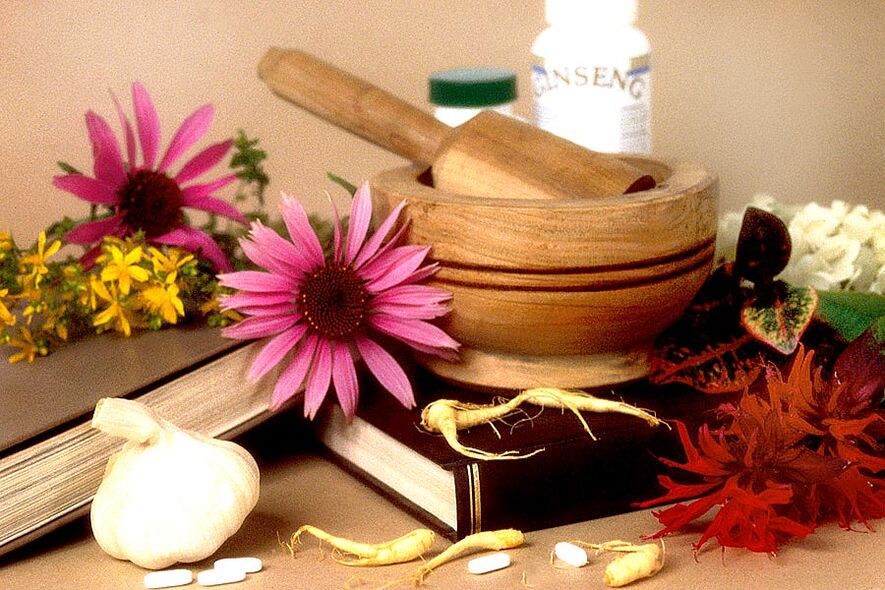Up to 20% of all people over the age of 25 are at risk of developing osteoarthritis of the knee. The knee joint operates in an axial compression mode, so its articular surfaces are subjected to constant loads and can degenerate in the articular cartilage.
%20and%20osteoarthritis%20(left).jpg)
Ratio
The pathology of articular cartilage of a degenerative-dystrophic nature with the participation of bone tissue, articular sacs, ligaments and muscles in the process is called joint deformity. In the term there are synonyms:
- osteoarthritis;
- osteoarthritis;
- osteoarthritis;
- arthritis;
- hypertrophic arthritis;
In terms of frequency, damage to the knee occurred immediately behind the hip joint, so a stabilizing phrase was formed: "gonarthrosis of the knee joint". The dependence of disease frequency on age has been studied:
| 26 - 44 years old | 5% of adults |
| 45 - 59 years old | 16, 70% |
| 60 - 69 years old | 12, 10% |
| 70 years old and up | eleven% |
In all age groups, representatives of the fair sex are numerically dominant. In them, knee osteoarthritis occurred 1. 2 to 1. 4 times more often than in men.
In the area of persistent disability, knee deformity accounts for nearly 30% of the causes of disability related to arthropathy.
Classification of gonarthrosis

For developmental reasons, the disease is divided into two large groups: primary and secondary. Key arises without clear prerequisites. Secondary that precedes (or is accompanied by) triggers:
- biomechanical disorders: trauma, overload, developmental anomalies (dysplasia), skeletal pathologies (scoliosis, flat feet), obesity;
- inflammatory process: aseptic or infectious arthritis, hemorrhagic common in hemophilia;
- metabolic diseases: gout, hemochromatosis, Paget's disease;
- disorders of the endocrine glands: acromegaly, diabetes mellitus, disorders of the parathyroid glands;
- violation of adequate blood supply: varicose veins and post-thrombotic syndrome, endometritis, atherosclerosis of the lower extremities;
In medical practice, grading by severity of pathological changes is more useful. The evaluation was performed according to radiographic studies. The most common clinical and radiological classification.
I stage
The image shows a slight narrowing of the inter-articular spaces (compared with healthy joints), the onset of perichondral sclerosis. Clinically - pain occurs when walking or immediately after, when standing for a long time. More pronounced when going up stairs. Overcome the rest. Grade 1 gonarthrosis does not greatly affect joint function.
phase II
The joint space is 2-3 times narrower than normal. The sclerosis is more pronounced, with osteophytes (spiky growths of bone tissue along the edges of the joint spaces and foreskin). The pain is moderate, with signs of muscle atrophy, limping. The deformity of the knee is visible on the front axle. Grade 2 gonarthrosis results in significant limitation of joint mobility.
stage III
Hardening of cartilaginous elements, deformation of the joint surface. There are areas of subchondral necrosis, local spongy bone. Cysts in adjacent bone tissue. The joint space is severely narrowed, sometimes indefinable. Osteophytes are of considerable size. Atrophy of thigh and leg muscles, joint instability, marked deformity. Movement in the knee is sometimes impossible, contractures are formed. When moving - severe pain, limping.
This classification approach is convenient in that it allows the assessment of clinical manifestations associated with organic changes. It offers the opportunity to choose a more effective treatment based on a comprehensive assessment of the condition of the joint.
development mechanism

The pathogenesis of any joint disease goes through three stages:
- Damage to cartilage microstructures. Under the influence of any harmful factors, macromolecular compounds lose their strength and are enriched with water molecules. The ability of low molecular weight collagen to assemble into macromolecules is impaired. This leads to a decrease in the strength and durability of the transparent cartilage. Chondroprotectors combat such phenomena.
- If the triggering factor is not removed, the deterioration of cartilage components (glycosaminoglycans, proteoglycans) will continue. This leads to the activation of recovery processes. Their power reserve isn't particularly large, so one phase quickly moves on to the next.
- Disruption of compensatory mechanisms leads to the gradual destruction of articular cartilage, the death of its cells - chondrocytes. Cartilage cracks extend to the underlying bone. The degree of separation of the cartilaginous components increases, their deformation occurs, resulting in a thinning of the hyaline membrane.
On the skeletal side, with deformity of the knee joint, thickening (sclerotic), cysts and areas of uneven bone density appear. As a result, deformation of the joint surfaces, instability of the joint develops.
diagnose
Diagnosis is based on a set of data obtained as a result of a survey (anamnesis), medical examination and instrumental research methods. The latter includes radiographic examination (CT, MRI), radioisotope (scintigraphy), arthroscopy.
objective check
It includes clarifying the patient's life history, pre-existing situations for the development of gonorrhea in the knee joint, collection of complaints and examination. In this process, the presence of provoking factors and the degree of their influence on the development of the disease is clarified.
At this stage, it is important to find out the condition of the second knee. If you miss bilateral gonorrhea and focus only on the knee that worries you more, you could be making a serious diagnostic mistake.
For this, functional tests should be performed on two limbs at the same time. One notices pain on active and passive movement, sensitivity to palpation, and crunching (creaking) sound when stretching and bending. Chronic inflammatory processes lead to the appearance of Becker's cyst - a protrusion of the joint pocket into the popliteal fossa, which can also be detected by palpation.
Instrumental Methods

The first is an X-ray. The image of the knee in two views allows a preliminary assessment of the condition of the joint and the determination of the stage of the disease. The disadvantages of the method are that the radiographic findings occur later than the symptoms and morphological changes associated with the knee joint.
In such cases, an MRI (magnetic resonance imaging) will help. It is possible to identify the initial stages of degenerative changes in the structure of cartilage and bone, it is possible to assess the condition of the ligaments in the joint, meniscus. Scanning for gonarthrosis of the knee joint provides functional status data.
The joint cavity can be directly examined by arthroscopy.
To unify diagnostic data, the American College of Rheumatology suggested the following criteria:
- Age over 50 years.
- Stiffness in the morning, lasting at least half an hour.
- Cracks, defined by movement (active and passive).
If these symptoms are accompanied by bone spurs detected on x-rays and pain, there is a good chance that knee osteoarthritis is present.
The early stages of the disease may not be pronounced, therefore, it is necessary to conduct differential diagnosis with other rheumatic diseases, in which pathogenic drugs for osteoarthritis (chondroprotectors) will not be effective.
All possible measures should be taken so as not to confuse gonarthrosis with the following conditions:
Rheumatoid arthritis |
Early onset, morning stiffness for more than 30 minutes, pain worse at rest and weaker with movement, rheumatoid nodules on skin, concomitant damage to internal organs, toxic symptoms (fever, vomiting, sweat), C-reactive protein in blood tests. |
arthritis crystals |
Severe pain, at night or in the morning; the skin on the diseased joint is edematous, red, hot; crystals on microscopic examination of joint fluid, increased uric acid in the blood (with gout). |
degenerative spine disease |
Inflammation of other unrelated joints (intercostal joints, lumbar joints); inflammatory processes in the tendons; damage to the cornea, skin, mucous membranes. |
In the International Classification of Diseases of the Tenth Revision (ICD 10), all of these diseases are assigned the index "M", but a different number.
These are fundamentally different pathological processes that require a professional approach to diagnosis and qualified treatment.
treatment measures

If there is a disease, there must be a cure for osteoarthritis of the knee. And they exist. Help can be provided in a variety of ways.
First of all, the achievements of traditional medicine, based on in-depth research into the causes and mechanisms of disease. Medical and surgical methods are used here. Effective treatment requires the consistent and complex use of medications, physical therapy, and rehabilitation measures.
The second way is treatment with folk remedies. To put it mildly, the effectiveness of these methods is questionable. But they are used because it is possible to reduce the symptoms of the disease at home. Folk remedies can be used only as an adjunct to drug therapy or as part of complex therapy, necessarily with the consent of the treating doctor!
medication help
This type of treatment includes the use of different medications. For the therapeutic effect, drugs from different groups are used:
- non-steroidal anti-inflammatory drugs, analgesics, opiates;
- slow-acting symptomatic drugs (chondroprotectors);
- glucocorticoid hormones;
NSAIDs, quick relievers, opiates
Medicines of this group are designed to eliminate pain. The pain syndrome pretty much spoils the lives of patients with arthritis, its elimination greatly improves the quality of human life. NSAIDs, anilides, non-narcotic and narcotic analgesics have this ability.
A common downside is the side effects. These drugs negatively affect the kidneys, the protective mechanism of the gastrointestinal tract. An alternative that can reduce harmful manifestations is injections. Intramuscular injections cause less stomach damage and speed up the effect.
Because of the side effects, drugs of this class are prescribed during exacerbations, requiring careful dose selection.
The main advantage of NSAIDs is that there are many forms of topical treatment (ointments, gels). Allows you to control the manifestations of the disease at home.
Analgesics of central action are prescribed for a short time, with less effectiveness of the other two groups. Opioids are most commonly prescribed during exacerbations, more often with bilateral gonorrhea. These drugs are addictive. You can't take them alone!
Symptomatic slow acting drugs

The action of these substances is twofold: they have the ability to relieve pain (in the form of NSAIDs) and contribute to the restoration of transparent cartilage. Often they are called chondroprotectors.
The effect develops over several weeks (2-8) and persists after cancellation for 2-3 months.
In addition to chondroitin sulfate and glycosaminoglycans, this group includes preparations based on hyaluronic acid, compounds derived from avocados and soybeans.
The most studied and most common chondroprotectors (chondroitin sulfate and glycosaminoglycans) are preformed components of articular cartilage. Well absorbed into the bloodstream, forming high concentrations in the joint cavity. To accelerate the effect, can be injected directly into the joint.
It has been shown that chondroitin sulfate, taken for two years at a dose of 800 mg per day, has a space-stabilizing effect in gonarthrosis of the 2nd degree knee.
Avocado/soy compounds have anti-inflammatory effects. By inhibiting collagenase (a degrading enzyme), they significantly slow down cartilage destruction, increasing "their own" collagen synthesis. They are also very well tolerated.
Derivatives of hyaluronic acid are administered as intra-articular injections. These funds, like chondroprotectors, improve the functional state of the knee joint.
The mechanism of action of symptomatic slow-acting drugs is slightly different, so their combination is recommended. A high level of safety allows you to use chondroprotectors for a long time without noticeable harm to the body.
Glucocorticoids
The main action is anti-inflammatory. These sums are prescribed when NSAIDs are ineffective. The tablet form also damages the stomach lining. Intra-articular injection is available.
They have many side effects, so you should not abuse hormonal drugs to treat knee osteoarthritis.
Group name |
Favorable |
errors |
|---|---|---|
NSAIDs, painkillers, opiates |
Fast acting, many forms of topical application. |
Side effects, unstable effect, dangerous for patients related to age, addiction occur. |
Chondroprotectors |
They are pathogenic, long-acting, non-toxic, and are available in external and intra-articular forms. |
The effect develops slowly. |
Hormonal |
Fast acting when there are not enough NSAIDs; types used in joints. |
Side effects, unstable effects, long-term use is impossible. |
Ethnographic

At home, you can reduce the manifestations of the disease with folk remedies. There are many recipes, but there are some but:
- no clinical studies have been performed;
- the drug substance cannot be accurately quantified;
- the designation is not clearly defined;
- individual tolerance of folk remedies is not taken into account;
The advantages include a wide range of treatments, a wide range of options for external use. Homemade compresses and tinctures, ointments are popular.
The effectiveness of home treatment can be demonstrated by the fact that biologically active substances (gum, bile, infusion of medicinal plants) are used for the preparation.
In addition, effective treatment with folk remedies begins with adherence to a diet, weight loss. Particularly, this method to reduce the load on the joints can reverse knee osteoarthritis grade 1 (the condition is young age, the ability to compensate is enough). Healthy eating in itself stimulates the body's ability to regenerate. The diet includes: mild hunger, vegetables, fresh juices. It is recommended to add low-fat jellies and jellies to the diet.
External means are very diverse. They mainly have a stimulating and warming effect. The most studied components are bile, dimethyl sulfoxide and bischofite. Bile should be used medically and should not be extracted independently from carcasses of animals. Dimethyl sulfoxide is an analogue of a chemical warfare agent, mustard gas. Bischofite is a petroleum derivative. It is a difference of origin.
All three drugs have anti-inflammatory effects, however, they should only be used at home after consulting a doctor. These substances also have contraindications and application features.
We must not forget the placebo effect in the treatment of folk remedies.
The last thing I want to convey is that a person has a health. You should not completely trust the simplicity and cheapness of folk remedies. If you've decided to try them, pay extra attention to the painful joint. The progression of the disease against the background of folk remedies is reason to reconsider the therapeutic approach.
If you are diagnosed with knee osteoarthritis of grade 2 or higher, it is better not to mess around with traditional medicine. Or delay it for a period of remission. Unsatisfactory treatment is an indication for complex surgical intervention.
























